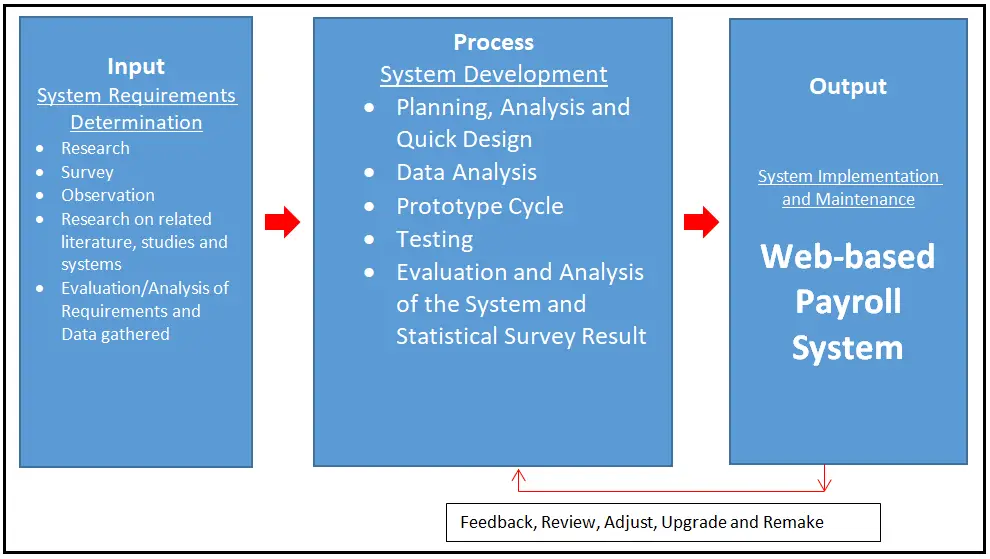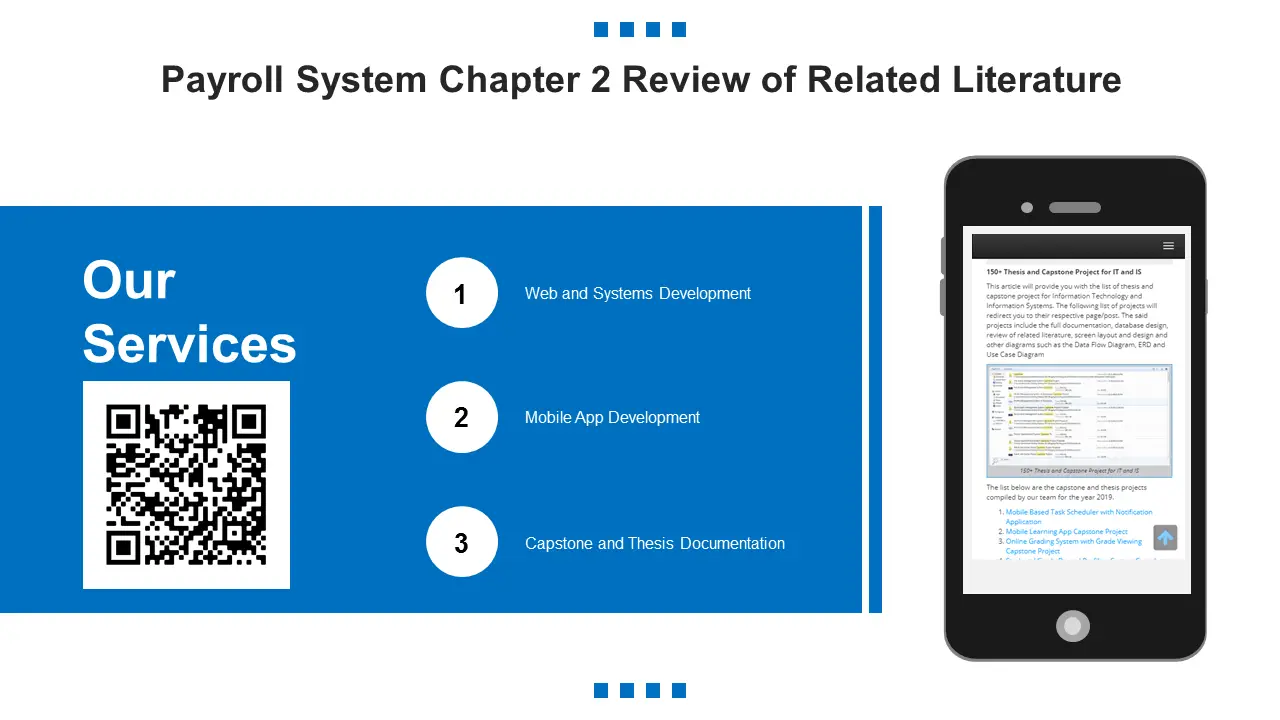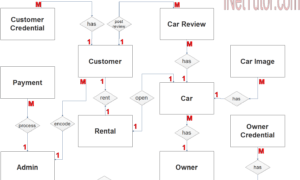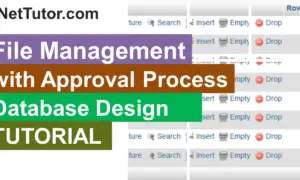Payroll System Conceptual Framework
This article will show you how to create a conceptual framework for the capstone project Web-Based Payroll System. The input, process, output (IPO) model was used for the conceptual framework of this investigation.
About the Project
Table of Contents
The “Web-based payroll system” is a web-based system that handles and calculates the payment of employee wages, salaries, bonuses, net pay, and deductions. The goal of the research is to develop a web-based payroll system that handles employee accounting activities such as wages, salaries, bonuses, net pay, and deductions, among other things. It emphasizes the value and advantages of a web-based payroll system for paying staff in a separate organization or for end customers. The system covers the process of preparing each employee’s pay slip, both regular and work order employees, keeping records safe, and computing each employee’s precise earnings, as well as the employee’s saved report list, which includes monthly salary, basic salary, overtime, Net pay, and deductions, as well as the employee’s saved report list.
Objectives of the Study
- To design and construct a system that conveniently calculates accounting transactions in an organization, particularly employees’ earnings and salaries, and summarizes, compiles, and organizes employees’ information about their paid job.
- To make transaction reports more accurate, secure, structured, efficient, and simple.
- To create a system that tracks and handles employee payments, salaries, and wages, as well as other accounting-related tasks in a business or organization.
- To relieve the employee’s paperwork burden while providing them with accurate work at the same time.
- The system can also run online, making it easier to access and store all of the information and data that is saved in it.
Conceptual Framework Diagram

The image above is the conceptual framework of the project entitled Web-based Payroll System. It is based on IPO model or also known as the input, process and output model.
Input
This part of the conceptual framework is also known as the System Requirements Determination or Definition. The Input phase of the model includes the following activities:
Research: Research is the process of gathering information and data to understand a particular topic or problem. In the context of the Input phase of the IPO model, research would involve gathering information about the current state of the payroll system, identifying areas for improvement, and gathering data on customer needs and expectations.
Survey: A survey is a research method that involves gathering information from a sample of individuals. Surveys can be conducted through various methods such as online, phone, or in-person. In the context of the Input phase, a survey would be used to gather information about customer preferences, needs, and expectations for a payroll system.
Observation: Observation is a research method that involves observing and recording the actions and behaviors of individuals in a natural setting. In the context of the Input phase, observation would be used to gather information about how customers currently use the payroll system and identify areas where improvements could be made.
Research on related literature, studies, and systems: This activity involves researching other literature, studies and systems that are related to the payroll system. It includes looking at similar systems and their functionality, to understand what has been done before, what works and what doesn’t.
Evaluation/Analysis of requirements and data gathered: This activity involves analyzing and evaluating the information and data gathered in the previous activities to identify requirements for the system. It includes evaluating the data, prioritizing the requirements, and determining the feasibility of implementing them in the new system.
Process
This is the part where the researchers will select and choose the best software development life cycle model that will fit for the project.
Analysis and Quick Design
During Analysis and Quick Design, the researchers did a personal interview with the respondents and the chosen client where the study was conducted. The respondents were given the chance to suggest how the Web-based Payroll System will be designed. After conducting the data gathering, the researchers made an initial design for the proposed system which is the Web-based Payroll System.
Data Analysis
The researchers will analyse all the data, user requirements and information. This phase also help the researchers to have an idea on how to create the system and have an idea on how the Web-based Payroll System would be beneficial to the clients.
System Design
The researchers will start to develop the Web-based Payroll System. It includes the design; how the system would look like based on user requirements, and the researchers/programmer will apply their knowledge on programming and design to make the system more interactive and user friendly.
Prototype Cycle
This stage will include the compiling, building, demonstration also refinement of the data gathered by the researchers. The researchers first build a prototype based on the planed design and data tables. After building the prototype it will be demonstrated to the client. The researchers show the function of the system, the flow on how it works, and the functions of the features that are included in the system. The last stage is refinement where in the researchers will refine the system by client’s additional needs. This will include changes in features flow and functions based on the requirements.
Testing
This will include the feed backing of the proposed system after it will be implemented and had undergone testing by three Experts. It will also inform the researchers and the developer if there are any bugs, suggestion and if the system’s functionality will works well.
This will discuss the results of the testing wherein Three (3) Experts will evaluate the propose system. This will also discuss if the recommended functions and suggestion are met.

Output
After all of the necessary steps have been completed, the project is brought to life and implemented in the real world. A new project is born and will be maintained to ensure the project’s long-term survival. The Web-based Payroll System will completely migrate every company’s payroll system.
The Output and Outcomes of a web-based payroll system can include:
Accurate and efficient payroll processing: The system automates many tasks, such as calculating taxes and deductions, reducing the risk of errors and increasing efficiency.
Improved security: The system stores employee information and payroll data securely, reducing the risk of unauthorized access and data breaches.
Increased accessibility: The system allows employees and managers to access payroll information from anywhere, at any time, through a web-based interface.
Better data management: The system allows for the efficient storage and retrieval of payroll data, leading to improved data accuracy and reliability.
Better reporting and analytics: The system provides detailed information about payroll expenses and employee earnings, which can be used to make informed business decisions.
Increased transparency: The system provides clear and transparent information about payroll processes and expenses, improving accountability and trust.
Reduced workload for HR staff: The system automates many tasks, such as calculating taxes and deductions, reducing the workload for HR staff and increasing efficiency.
Better compliance with regulations: The system ensures compliance with all relevant payroll regulations, reducing the risk of legal penalties and fines.
Overall, a well-designed and implemented web-based payroll system can lead to a wide range of benefits for both the organization and its employees. By automating many tasks and providing improved accessibility, security, and data management, a web-based payroll system can streamline payroll processes and lead to increased efficiency and cost savings.
Summary
The researchers developed the conceptual framework for the investigation using the input, process, output (IPO) model. The input phase includes research, surveys, observations, research on related literature, studies, and systems, and evaluation/analysis of requirements and data collected. The system development technique will be employed during the process phase, which includes Planning, Analysis, and Quick Design, Data Analysis, Prototype Cycle, Testing and Evaluation, and System and Statistical Survey Result Analysis. A new initiative has begun, and it will be nurtured in order to assure its long-term success. If accepted and maintained, the Web-based Payroll System will completely migrate every company’s payroll system.
Readers are also interested in:
Web-based Payroll System Free Download Template in Bootstrap
Payroll System Database Design
Top 90 Visual Basic Project Ideas
You may visit our Facebook page for more information, inquiries, and comments. Please subscribe also to our YouTube Channel to receive free capstone projects resources and computer programming tutorials.
Hire our team to do the project.

